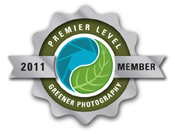
One great way for photographers to hone their skills is by photographing wild birds. Some breeds are tame enough to let you get close, but if you have a decent zoom lens, that isn’t necessary. What is necessary is patience.
The early spring is an ideal time because the trees are still bare, but the birds are beginning to dress in their breeding plumage. A loon in January is very unspectacular. But a loon in April with his breeding feathers in place is truly a beautiful sight. The image on the left is a great egret. His wispy tail will only last a few weeks while he awaits a mate. By the way, it is usually the males who undergo the most dramatic changes in their plumage.
Before I go any further, I wish to emphasize the importance of respecting the bird’s boundaries. As I mentioned some are more tolerant of humans than others. But regardless of how tolerant they are, you may be inadvertently disturbing a feeding area, nesting area, or even breeding area. Pay attention to posted signs, fences, and the bird’s behavior. AND OBEY THE SIGNS!
Ok, now that my lecture is over, let’s get down to work. When you are looking for a particular bird, learn about its behaviors. The website Whatbird.com has a full library of great information about our avian friends where you can learn about their call, their favorite foods, preferred habitats, and more. Find the food and you’ll find the bird.
Then, start scoping out a few areas where your bird will most likely visit at feeding time. Usually early in the day and late in the day are best, as is the light, but check it out at all times of the day. You never know what you might find! Once you select a spot, be prepared to wait, and be prepared to snap lots of photos.
An elaborate blind is not always necessary, either. A wildlife photographer once told me that if a human makes himself appear less human-like birds will come in very close. So, squat or sit and BE STILL. Or hide in your car. Once you stand with the camera to your face, the birds will start moving away, because your motion is very similar to that of someone preparing to shoot a gun. So if you can hide that motion, you will stand a better chance of getting the shot (on film-no bullets, please).
Also, watch your exposure. Keep the sun at your back if at all possible because you most likely will not be close enough to use full flash (and it would scare away the bird if you did). Keep you shutter speeds fast – at least 1/125 and your f/stop at f/8 or smaller. F/16 on a sunny day would be best. You need wide depth of field so your focus point isn’t lost the moment the bird moves a step toward you, and if it flaps its wings, you need to stop the action with fast shutter. Compensate for the fast shutter and small aperture by increasing your ISO. Most cameras have decent quality at 800, and usually 400 is all you need.
So folks, give it try, and let me know how you do. I would love to read your comments, suggestions and results here.




